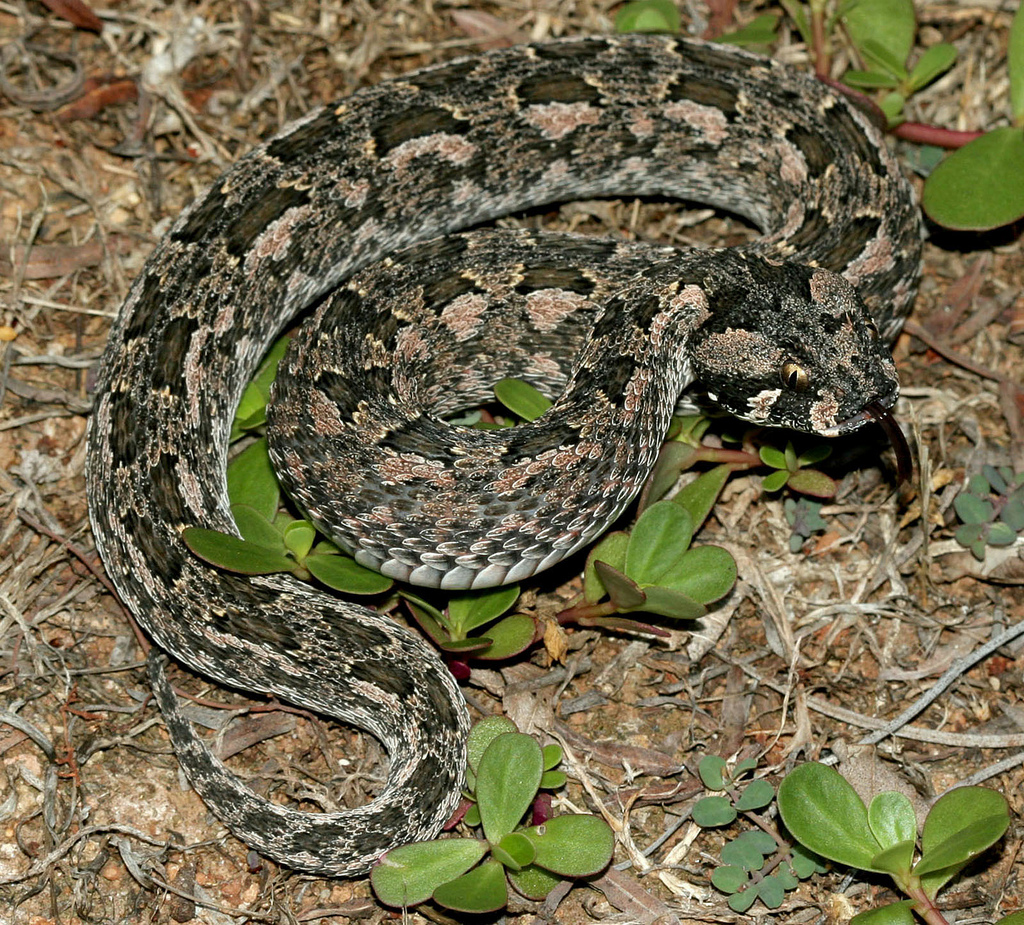Plain Mountain Adder
(Bitis armata)

Description
Bitis inornata is a venomous viper species found only in Cape Province, South Africa. No subspecies are currently recognized. Adults of Bitis inornata average 25–40 cm (about 10–16 inches) in total length (including tail), with a maximum recorded total length of 45 cm (18 in). Bitis inornata is endemic to Cape Province, South Africa. An isolated population exists on the Sneeuberg, eastern Cape Province, South Africa. The type locality is listed as "Sneeuwbergen, or Snow Mountains, immediately behind the village of Graaff Raynet" (Eastern Cape Province, South Africa). Spawls and Branch (1995) described it as known only from two isolated populations in southern Cape Province in South Africa: the first in the east, limited to the montane grassland of the Sneeuberge, from north of Graaff-Reinet to Cradock. A second population was discovered relatively recently on the upper slopes of the Cederberg in the west. Bitis is a genus of venomous vipers found in Africa and the southern Arabian Peninsula. It includes the largest and the smallest vipers in the world. Members are known for their characteristic threat displays that involve inflating and deflating their bodies while hissing and puffing loudly. The type species for this genus is B. arietans, which is also the most widely distributed viper in Africa. Currently, 15 species are recognized. Members of the genus are commonly known as African adders, African vipers, or puff adders. Size variation within this genus is extreme, ranging from the very small B. schneideri, which grows to a maximum of 28 cm (11 in) and is perhaps the world's smallest viperid, to the very large B. gabonica, which can attain a length over 2 m (6.6 ft) and is the heaviest viper in the world. All have a wide, triangular head with a rounded snout, distinct from the neck, and covered in small, keeled, imbricated scales. The canthus is also distinct. A number of species have enlarged rostral or supraorbital scales that resemble horns. Their eyes are relatively small. They have large nostrils that are directed outwards and/or upwards. Up to six rows of small scales separate the rostral and nasal scales. All species have a well-developed supranasal sac. The fronts of the maxillary bones are very short, supporting only one pair of recurved fangs. These snakes are moderately to extremely stout.
Taxonomic tree:







